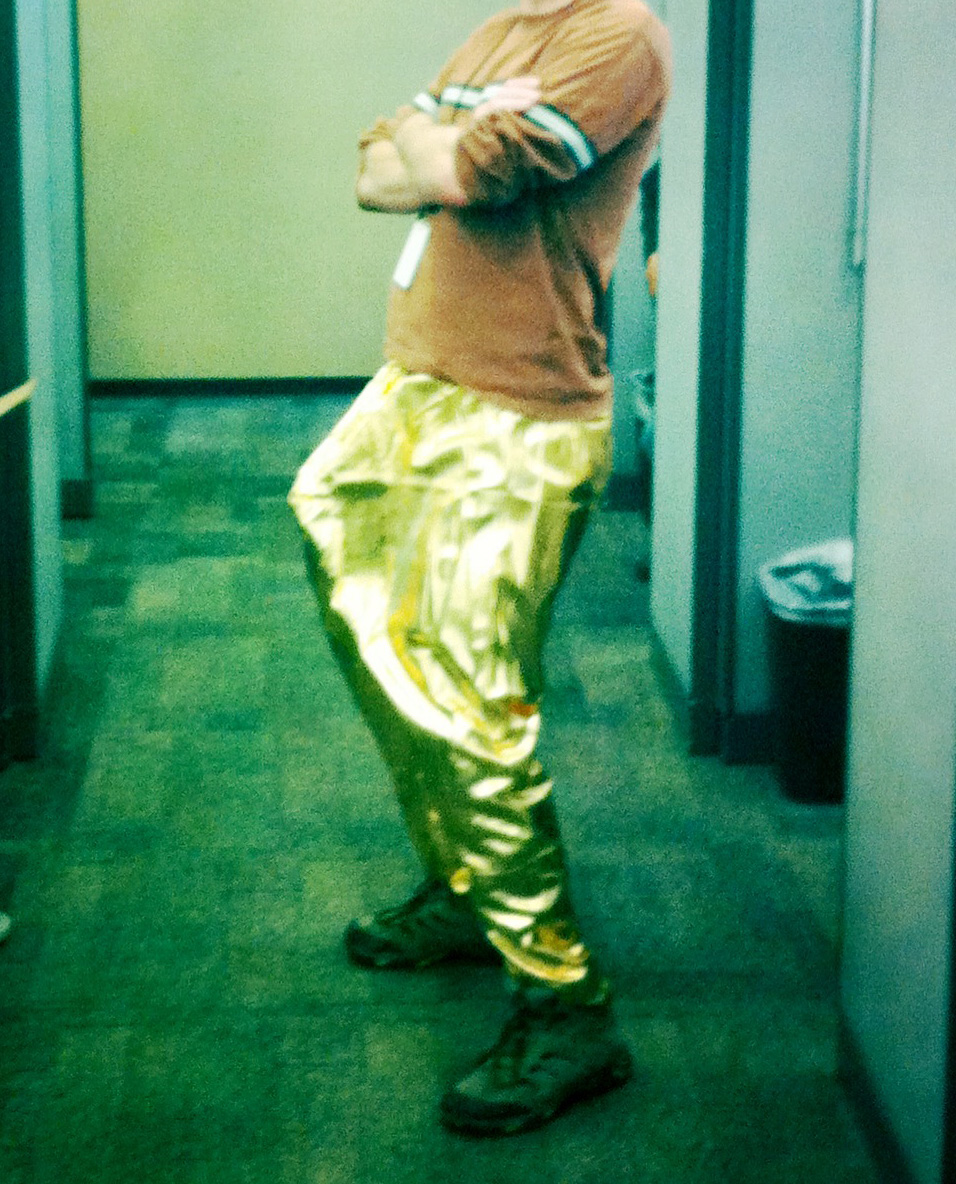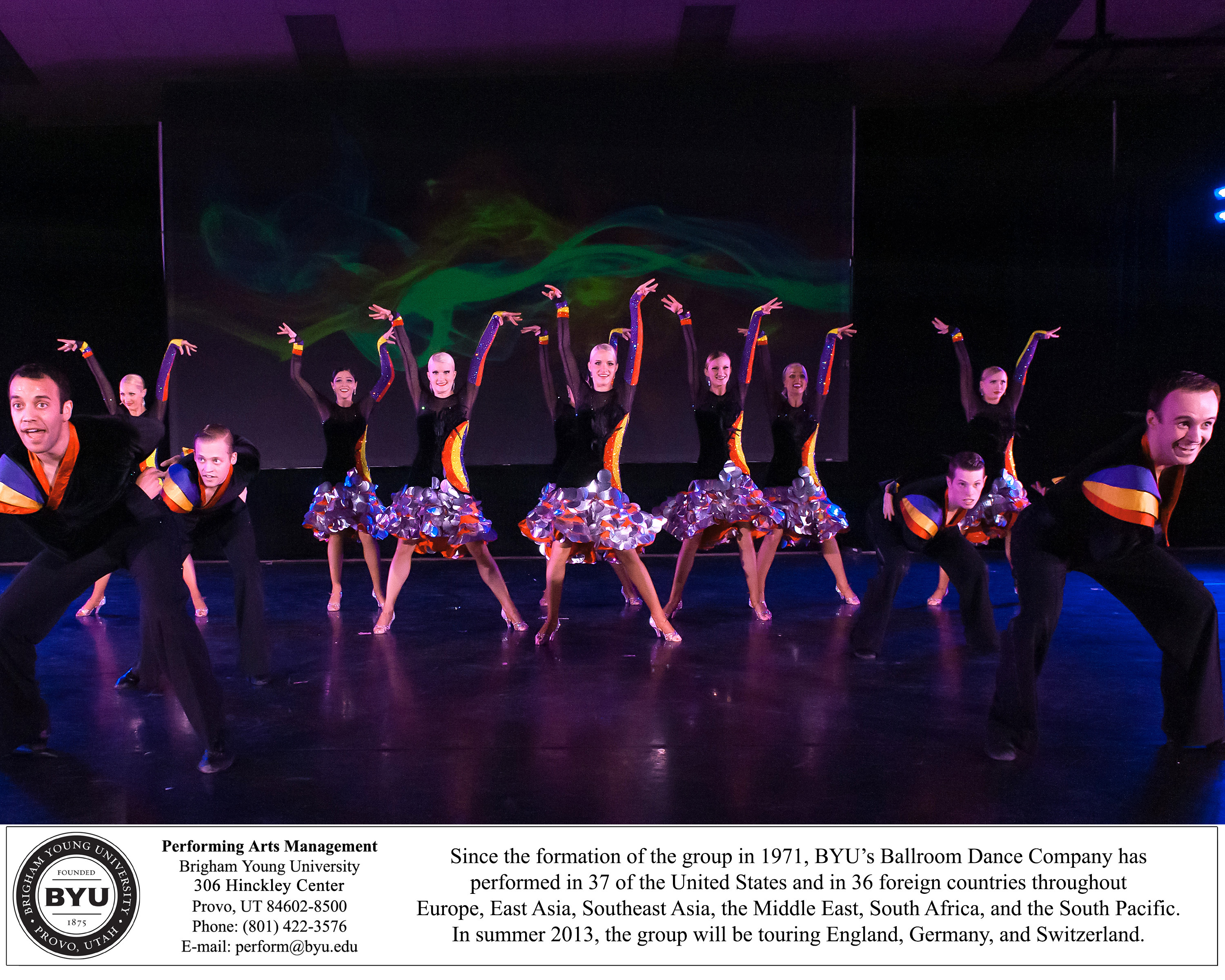Four Things Ballroom Dance Taught Me
If you were to look at me now, ‘professional dancer’ isn’t a descriptive term that is likely to spring immediately to mind. Years of a desk job do things to you. Yet, at one point in my life I held that title, meaning I was paid to dance or, more specifically, I was paid to teach other people to dance. It was a job I absolutely loved. My particular specialties? Country Western and American Social dance.

Office Hammer Pants
It was through a roundabout way I effectively stumbled into the ballroom dance scene at college. While I’d gone to plenty of dances while in high school, I wasn’t cool enough to pull off the then popular Hammer pants, and even then I could tell The Running Man wasn’t really my thing. Plus, there was this slightly scarring experience when the male choreographer for our production of Grease insisted all the boys take off their shirts during rehearsal because we “just weren’t feeling it.’
Needless to say, dance really wasn’t my thing in high school.
Then came college. Brigham Young University has the nation’s largest ballroom program, with over 4,000 students participating in it each year. A fair percentage of the student body at large takes at least one class from the department sometime during their college experience. The Ballroom Dance Company travels the world competing and presenting their unique show.
Both my mother and a great-uncle were heavily involved in the company when they attended BYU, and so there was at least some pressure to at least try one of the classes, which I did during my second year (mainly to make my mother happy—or it could have been the two girls who wanted me to take the class with them). The class was International Latin, and even though I wasn’t particularly good at it, it changed my life in some profound ways.
The next semester I took another ballroom class. The following… six.
I was hooked, and by the end I’d had some amazing experiences. I’d danced on the Backup Touring Team, competing individually at both the USABDA and NDCA Amateur National Championships, taught or TA’d over 1,000 students, traveled the world with the Ballroom Dance Company and was the technical director for several special tours in Nauvoo, Illinois. It was an experience I’ll never forget, and I made friends to last a lifetime.
Today, I just want to share just a few of the many, many lessons I learned while participating in this program.
Emotion Must Balance Intellect
Entering college, one could easily have described me as the quintessential geek (nerd or any other given term of that genre). During high school, while I had participated in sports, drama and band (the last two implying their own sort of geekiness), my true love was computers. Before the Internet was the behemoth it is today, it was the playground of us nerds. I kid you not, by first email address was:

Our local modem-based BBS network was awesome because our 300 or so systems were able to pool enough resources to afford both C- and K-band satellite dish links and a UUCP feed to the Internet. Geek heaven, it was.

Zeno of Citium
I also prided myself on being rather stoic in nature. It’s not that I was trying to channel Spock or anything, but the whole thing of letting one’s emotions override rational thought was a bit beyond me. Consequently, I had a hard time understanding certain responses people had to things. It’s not that I didn’t have emotions, but I always tried to contain them, fully subjecting them to my rational side. Really, to some extend I didn’t really understand why we had to have them.
Dance changed that. It’s not really possible to participate at the level I did without emotions creeping
into the picture. Now, I haven’t become one of those emotional nut cases one sees on the dance reality shows or in
Strictly Ballroom#PaidLink (and trust me, those people do really exist
in real life), but I learned emotions do have their proper place in the well-balanced psyche.
Humans are by nature emotional beings. I still hold rational thought should subjugate emotions when necessary, but emotions shouldn’t be ignored. They are telling you something important, and you ignore them only at your own peril.
Dance helped to balance me.
Why You Do Things Matters
One of the best ways to get better at ballroom dancing is to compete individually. Now, when I say individually, what I really mean is as a partnership. Ballroom is one of the rare art forms where the expression of the art cannot happen through you alone. It must be expressed through another person.
Being in a dance partnership is hard. It means spending lots and lots and lots of time together. You’d better be friends (and hopefully still will be by the time it’s all said and done). There’s the literal break-of-dawn practices because that’s the only time during the day the two of you have when you can meet. There’s the monetary cost of costuming and lessons. But even harder, there’s the learning how to communicate fault effectively. Often times the two of you are alone trying to work things out. Without the benefit of a coach or other dancer watching to see what’s going wrong, it’s easy to descend into bickering and fighting over seemingly small things.
You need to learn to work together.
Sure [Fred Astaire] was great, but don’t forget that Ginger Rogers did everything he did, backwards…and in high heels.
Bob Thaves
However, one of the great lessons I learned here was it is extremely important you are both doing it for the same reasons. Many of the other problems in a dance partnership can be fixed. This one can’t.
One day, a friend of mine asked me to be her partner. We were a good match in height, and even though she was not quite as far along in the program as I was, there was a lot of potential. We became partners… without clearly stating our goals to each other. Failure to do so set in motion a series of events that eventually led to the breaking of the partnership. Here’s what our unstated goals were:
| Me: | Get better at dancing and have fun |
| Her: | Get better at dancing to win |
We were both fine with the “get better at dancing’ part. It was the secondary (or really the primary) goal that was different. I did it because I enjoyed it, and while I wanted to do as well as I could, I wasn’t so concerned with winning or losing. She, on the other hand, wanted to win. Neither of these goals are bad. In fact, my semi-lackadaisical attitude probably kept me from progressing as far as I might have, while she was very, very successful in the dancing part of the program.
The important thing is, our goals were different. So, over time it created a wedge in our relationship, which in turn affected our dancing.
We need to be aligned together, if we are going to succeed.
Win or Lose, You Do It as a Team
Team competition in ballroom dancing is an interesting animal unto itself. Everyone needs to do their part without drawing undo attention to themselves. The purpose is to create an overall effect. A dancer who draws attention to themselves either by making mistakes or by unnecessary flourish ruins this effect.
This means everyone is equally needed. You as a dancer may do an absolutely fabulous job in a formation routine and it still be an overall failure because someone else messed it up badly. In other words, the only control one has regarding the success or failure is over one’s own part. Trust must exist with the others on the team, because you are relying on them and they on you.

Just as you share defeat when one of the group falters, when you are standing on the podium receiving the medal, it’s also because of the team. You do your part, and then celebrate as a group because it took all of your combined efforts.
Everyone Can Dance
I’ve heard many people say they can’t dance. And, to be honest, out of the more than 1,000 students I worked with either as a TA or a teacher, there was one… and only one who I question his ability to learn how to dance. Bless his heart, he tried awfully hard. Here’s the thing, every child knows how to dance without us teaching them.
Mother says I was a dancer before I could walk….
ABBA, Thank You for the Music
There’s that bit of music, that rhythm in all of us. Now, are all of us Fred Astaire or Ginger Rogers… no. Let’s just say not all of us are… as coordinated as we could be with a little more practice. But, that’s neither here nor there.
The reason I bring this one up is somewhere along the line many of us were told either by others or by ourselves that we can’t dance. So, we blocked it out of our lives, and something we did naturally as a child was lost.
Unfortunately, I think there are many such things in our lives that are lost as we grow up. As we follow the admonition to put away childish things as we grow older, we sometimes forget to hold on to the child-like things.
So, in the immortal words of Dave Barry:
Nobody cares if you can’t dance well. Just get up and dance.
Images courtesy of [Jon Roig](https://www.flickr.com/photos/runnr_az/ “Jon Roig
- runnr_az’) and Shakko via Creative Commons and BYU Performing Arts Management. Office Hammer Pants image cropped.
